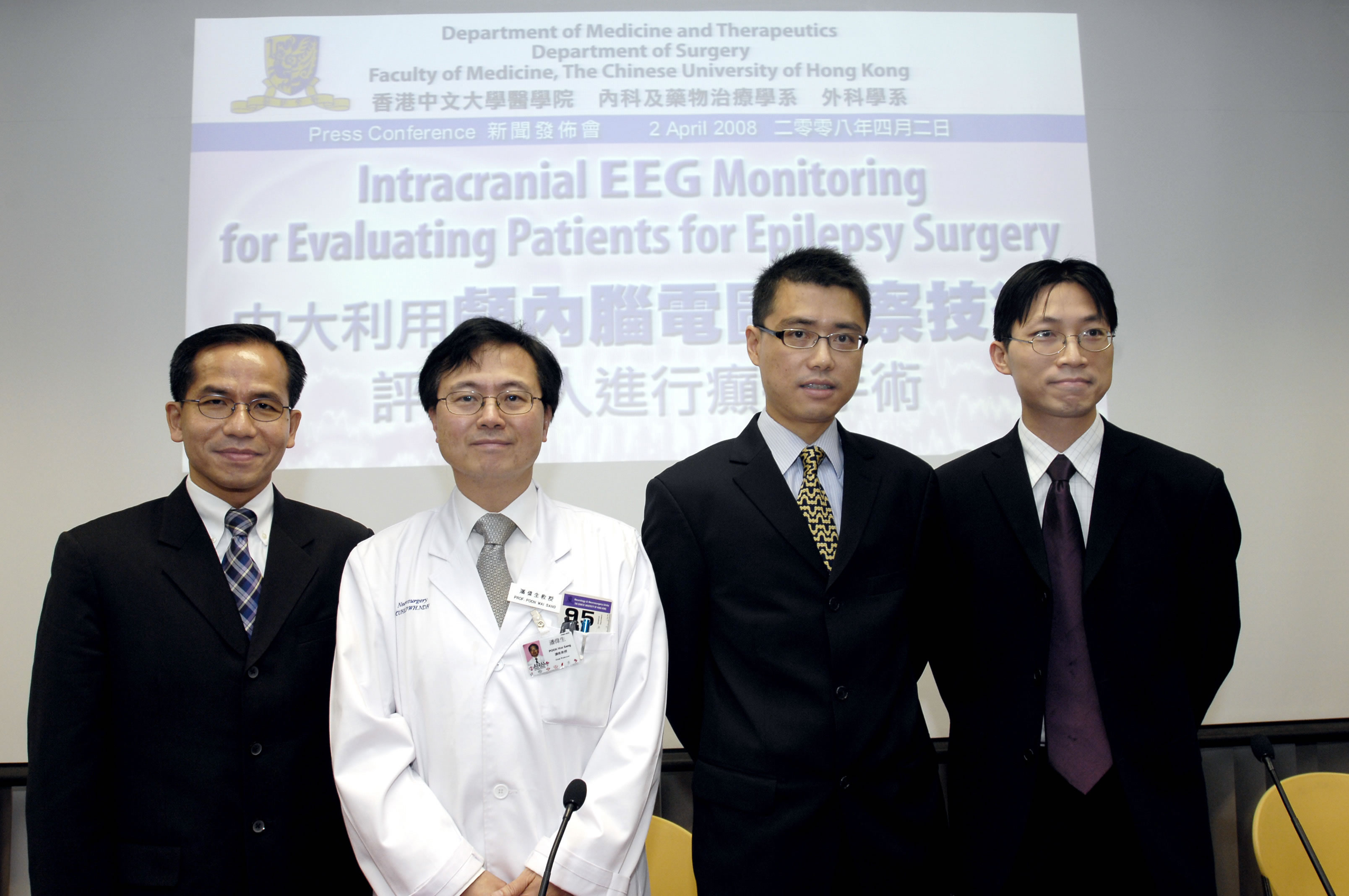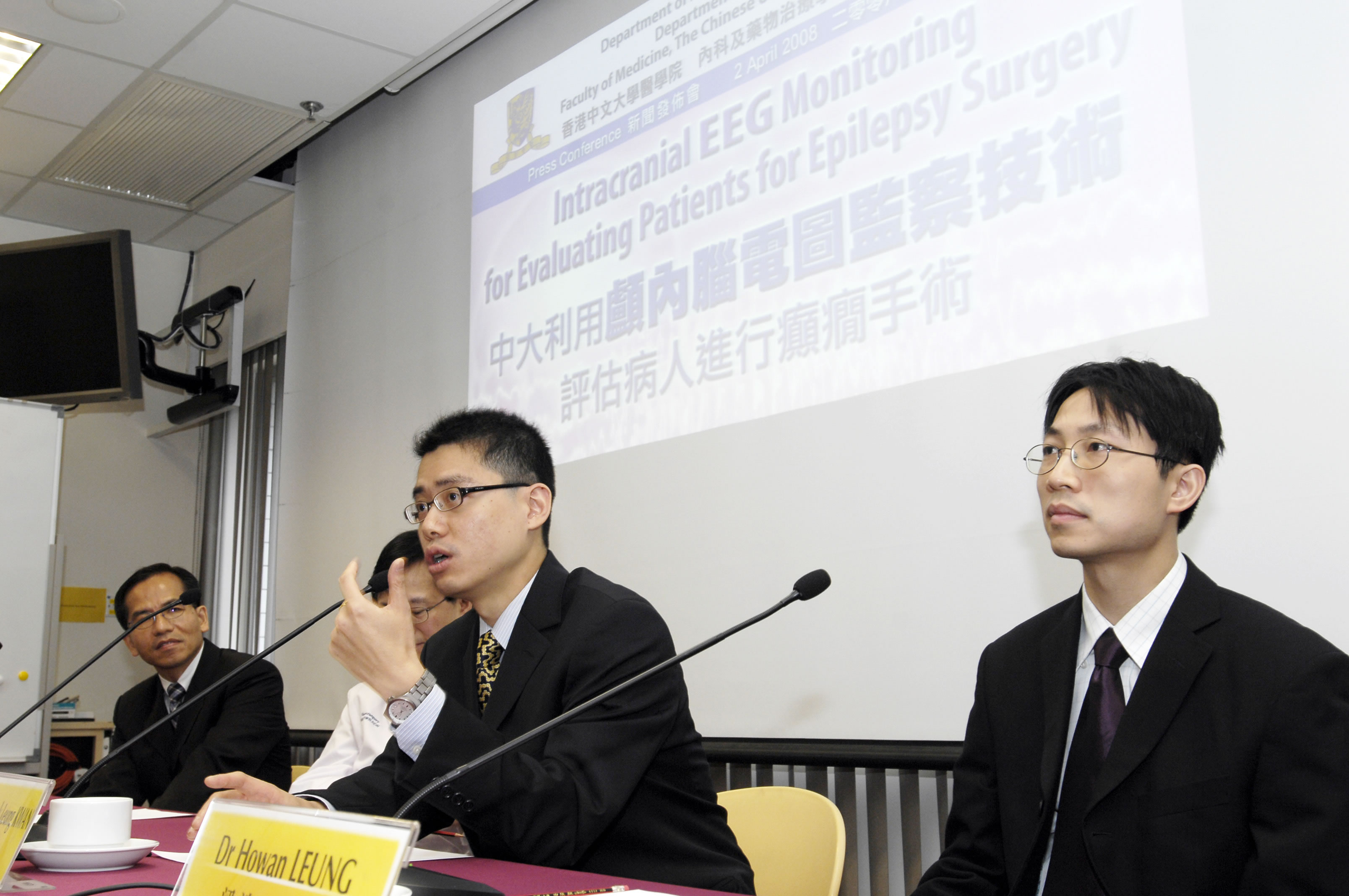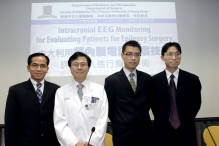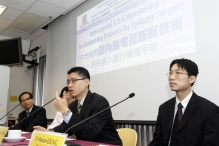CUHK
News Centre
Intracranial EEG Monitoring for Evaluating Patients for Epilepsy Surgery
It is estimated that at least 30,000 people have epilepsy in Hong Kong. Patients with epilepsy have recurrent seizures which can cause serious injuries or even death. Recurrent seizures can also affect study or work. Antiepileptic drugs cannot control epilepsy in 30% of patients. Some of these patients may benefit from epilepsy surgery which aims to remove the brain tissues responsible for causing the seizures. The operation can be curative in up to 80% of patients, many can even stop taking medication afterwards.
Evaluating whether a patient is suitable for such operation requires complex investigations to identify the responsible brain tissues and to ensure that removing the tissues will not impair important brain functions. A team of specialists work together, including neurologists, neurosurgeons, radiologists and clinical psychologists. They employ high-tech investigations to analyse the patient’s behaviour during a seizure and the electrical activities of brain (EEG) recorded on head surface, to detect structural brain lesions by magnetic resonance imaging (MRI), and to assess the patient’s cognitive functions. Operation can be recommended if findings from these non-invasive investigations are in agreement. However, in a substantial proportion of patients, results of these initial non-invasive investigations are insufficient or conflicting for localising the focus of seizure origin. In the past, epilepsy surgery would not be recommended for these patients, who would have to continue suffering from repeated seizures.
To help these patients, doctors from the Department of Medicine and Therapeutics and Department of Surgery at The Chinese University of Hong Kong (CUHK) have applied a more sophisticated method, called intracranial EEG monitoring, to accurately locate the seizure origin since 2006 in the Prince of Wales Hospital (PWH). It involves an operation to place electrodes onto the brain surface or into the brain substance. Since this method can record electrical signals directly from the brain, it can resolve the discrepancies among findings from non-invasive investigations, and help neurosurgeons to decide precisely the area of brain tissues for removal. In addition, doctors can use these intracranial electrodes to “map” brain areas with important functions, such as body movement and language, so that these areas will not be removed in the operation.
Up till now, over 70 patients have undergone epilepsy surgery at the PWH. The use of intracranial EEG monitoring was applied to three patients who were previously considered not suitable for surgical operation. These patients have become seizure free post-operation without complications, after years of epilepsy uncontrolled by medications. Doctors at CUHK plan to expand the use of this technique so that more patients may benefit from epilepsy surgery and enjoy better quality of life.
(From left) Dr Sam Kwai Sang NG, Honorary Clinical Supervisor, Department of Psychology, CUHK; Professor Wai Sang POON, Professor of Surgery, CUHK; Professor Patrick Kwok Leung KWAN, Honorary Clinical Associate Professor, Department of Medicine and Therapeutics, CUHK; and Dr Howan LEUNG, Honorary Clinical Tutor, Department of Medicine and Therapeutics, CUHK





